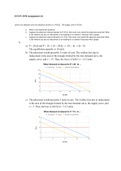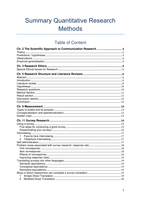Resume
Compassionate Technology | Summary of the articles (English)
- Cours
- Établissement
This is an extensive summary of the obligated articles for Compassionate Technology, written in English. This course is part of the Master's program Positive Clinical Psychology and Technology. Each summary starts with pointing out the study guidelines, provided by the teacher. Good luck!
[Montrer plus]











